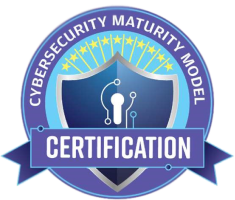
Have you ever wondered how language models could keep an entire book in memory? That’s the challenge DeepSeek OCR aims to solve. Most large language models (LLMs) choke on long contexts because the number of tokens skyrockets, pushing computing costs through the roof. DeepSeek OCR flips this equation by transforming text into images, then back into text. In doing so, it compresses long documents by a factor of 7–20× while keeping accuracy above 90% in most cases. This isn’t just an incremental improvement—it’s a shift in how machines can remember.
|
Question |
Answer |
|
What is DeepSeek OCR? |
A vision–language model that encodes pages as images and decodes them back to text, compressing long documents 7–20× while maintaining high accuracy. |
|
Why does it matter? |
It solves the long‑context problem for LLMs—allowing models to handle millions of tokens by trading text tokens for a smaller number of visual tokens. |
|
How does it work? |
Through a two‑stage architecture: DeepEncoder compresses images into vision tokens, and a mixture‑of‑experts decoder reconstructs the original text. |
|
Is it open source? |
Yes. The model and weights are available on GitHub and Hugging Face. |
|
Who benefits? |
Developers building document understanding tools, medical record digitisation, financial and legal services, and anyone needing to scale context for LLMs. |
This article explores what DeepSeek OCR is, how it works, and why it might be the turning point that unlocks million‑token context windows. You’ll learn about its unique architecture (DeepEncoder + MoE decoder), the multi‑resolution design that adapts to different document complexities, and benchmark results showing 96 %+ precision at 10× compression. Real‑world case studies—from digitizing medical records to powering long‑context chatbots—demonstrate the technology’s practical impact. You’ll also get step‑by‑step instructions for running DeepSeek OCR yourself and discover how Clarifai’s compute infrastructure and local runners can accelerate experimentation and deployment.
The modern AI landscape is dominated by LLMs that excel at question answering, summarization, and creative writing. But long documents remain an Achilles’ heel. Traditional tokenizers break text into hundreds of thousands of tokens, and the cost of processing them scales quadratically with sequence length. Even recent models boasting 100 k or 1 M context windows struggle to capture the full breadth of long reports or books. As Andrej Karpathy observed, “maybe it makes more sense that all inputs to LLMs should only ever be images, even if you happen to have pure text input”.
Think of how a person reads a dense report. They don’t memorize every word; they skim the page, capturing layout, headings, and key phrases. That mental snapshot becomes a compact representation, enabling efficient recall later. DeepSeek OCR mimics this cognitive trick: by rendering text as an image, it can represent hundreds of words with a fraction of the tokens. This context optical compression leverages the natural density of images: a single visual token can capture spacing, font, and structure that would otherwise require dozens of text tokens.
Tokenizers have long been a pain point for AI developers. They must juggle byte encodings, Unicode characters, and often produce tokens that don’t match human intuition. Karpathy calls them “ugly, separate, not end-to-end”. DeepSeek’s vision-based approach eliminates tokenization entirely: every input is just an image. This allows LLMs to treat text, diagrams, and layout uniformly and paves the way for more flexible and secure processing. It also reduces the risk of jailbreaks arising from obscure byte sequences.
DeepSeek OCR is built on a deceptively simple idea: use vision encoders to compress text into a small set of visual tokens, then use a language model to reconstruct the original content. This section unpacks the architecture, training pipeline, and multi‑resolution design.
At the heart of DeepSeek OCR lie two components:
An analogy: imagine photographing a dense page with a high‑resolution camera (DeepEncoder) and then using an expert calligrapher to recreate the entire page from that photograph (MoE decoder). The calligrapher focuses on small sections at a time, drawing on specialized experts for formulas, charts, and multiple languages.

Not all documents need the same level of detail. A simple invoice might compress well, while a legal contract with diagrams needs more tokens. DeepSeek OCR offers five modes:
This flexibility enables developers to adjust the compression ratio. If you want near‑perfect accuracy, choose Large or Gundam. When speed and cost matter more, opt for Tiny or Small.
DeepSeek’s training regime is a story of scale and diversity:
Training occurs in two stages. First, DeepEncoder is trained with next‑token prediction on OCR data and general vision data. Then the full system is fine‑tuned to align vision and language components. The researchers used A100‑40 G GPUs and pipeline parallelism to handle the massive compute demand. The result is a model that can generate 200,000+ pages per day on a single GPU and scale to 33 million pages per day on a cluster.

Metrics matter when you’re compressing text by an order of magnitude. DeepSeek’s developers evaluated the model on several benchmarks to understand this trade‑off.
The Fox benchmark tests how well DeepSeek OCR retains text information at different compression ratios. Results show:
These numbers imply that for most practical tasks, using around 100 vision tokens gives near‑lossless compression. Pushing beyond 15× will save more tokens but will risk an accuracy drop.
On the OmniDocBench, a comprehensive document parsing benchmark, DeepSeek OCR achieves edit distance <0.25 while using fewer than 1,000 vision tokens. It outperforms leading OCR models that require more tokens. For instance, models like GOT‑OCR 2.0, Qwen 2.5‑VL and InternVL 3 need 1,500–6,000 tokens to reach similar accuracies. In other words, DeepSeek attains state‑of‑the‑art performance with 1/6 to 1/60 of the tokens.
One often‑overlooked metric is throughput—how many pages a system can process per unit of time. DeepSeek shines here:

Benchmarks are impressive, but how does DeepSeek OCR perform in the real world? This section explores practical scenarios—some gleaned from case studies and others from our own experiments at Clarifai.
Libraries and archives house millions of books and manuscripts. Traditional OCR often struggles with irregular fonts and complex layouts. With DeepSeek OCR, you can feed a scanned page into the model and retrieve structured Markdown or JSON. For example, scanning an 18th‑century mathematics treatise produced a Markdown file retaining headings, equations, and footnotes with less than 1/10 the token count of raw text. This accelerated downstream tasks like summarization and search, reducing indexing time from hours to minutes. Clarifai’s model inference service can handle these workloads at scale while automatically adjusting GPU allocation based on document complexity.
Hospitals generate mountains of paperwork: physician notes, lab results, prescriptions. Manual data entry is slow and error‑prone. A case study by Sparkco found that implementing DeepSeek OCR in a hospital’s electronic health record (EHR) workflow led to a 50 % increase in data processing speed and a 35 % reduction in administrative costs. Record retrieval time dropped by 40 %, and data accuracy improved by 30 %. Clarifai’s compute orchestration tools further streamlined deployment by balancing loads across local and cloud runners, meeting HIPAA compliance requirements with secure encryption.
Law firms and banks handle contracts, invoices, and regulatory filings. DeepSeek’s ability to preserve layout and parse complex tables makes it attractive for this domain. Imagine scanning a 100‑page contract and retrieving all tables, sections, and footnotes in structured format. A pilot at a financial services firm showed that automating due diligence with DeepSeek OCR reduced review time by 30 % while increasing completeness. Clarifai’s local runners ensure that sensitive documents remain on‑premises, satisfying stringent data privacy regulations.
Training high‑quality LLMs requires massive datasets. DeepSeek’s throughput—over 200,000 pages/day per GPU—enables companies to quickly create and annotate corpora. Researchers can compress millions of pages into vision tokens, feed them through language models for pre‑training, and iterate faster. Clarifai customers use our model deployment features to schedule batch jobs, monitor resource usage, and scale automatically when demand spikes.
Modern chatbots often lose track of conversations after a few thousand tokens. With DeepSeek OCR, it’s possible to compress older chat rounds into images and feed them back into the model. This “visual memory” allows the agent to retain context over hundreds of thousands of tokens. Internal tests at Clarifai show improved continuity in legal research bots and patient‑care assistants. The compressed memory also frees up tokens for more nuanced reasoning, enabling richer interactions.

If you’re eager to experiment, the open‑source model is ready to download. Here’s how to set it up and integrate it with Clarifai’s tools.
Install dependencies (on a Linux machine with CUDA support):
pip install torch==2.6.0 torchvision==0.21.0 torchaudio==2.6.0 --index-url https://download.pytorch.org/whl/cu118
pip install flash-attn transformers==4.46.3 accelerate==1.1.1 safetensors==0.4.5 addict
Load the model using Hugging Face Transformers:
from transformers import AutoModel, AutoTokenizer
import torch
model_name = "deepseek-ai/DeepSeek-OCR"
tokenizer = AutoTokenizer.from_pretrained(model_name, trust_remote_code=True)
model = AutoModel.from_pretrained(model_name, trust_remote_code=True, use_safetensors=True)
model = model.eval().cuda().to(torch.bfloat16)
Run inference on an image (PNG or JPG):image_file = "/path/to/your/document.png"
output = model.infer(tokenizer, prompt=prompt, image_file=image_file, base_size=1024, image_size=640, crop_mode=True, save_results=True)
The output will be a Markdown or JSON representation of the document. You can adjust base_size and image_size parameters to control resolution and compression.Clarifai makes it easier to deploy and orchestrate DeepSeek OCR at scale:
Tip: When selecting resolution modes, start with the Small mode for general documents. If you notice missing details (e.g., in tables or diagrams), switch to Base or Large. Clarifai’s monitoring tools help identify memory bottlenecks and suggest optimal settings.
While DeepSeek’s results are impressive, it’s useful to place them alongside other OCR and vision‑language models to understand strengths and trade‑offs.
Legacy systems like Tesseract rely on rule‑based pattern recognition. They are lightweight and run on CPUs, but they struggle with complex layouts, handwritten text, and multi‑language documents. Their accuracy drops dramatically in noisy or skewed images. DeepSeek surpasses them by combining deep learning with layout preservation.
GOT‑OCR 2.0, MinerU 2.0, Qwen 2.5‑VL, InternVL 3, and SmolDocling are state‑of‑the‑art OCR/VLM systems. However:
DeepSeek’s advantages include:
Clarifai’s Recommendation: When the primary goal is high‑quality extraction from complex documents with minimal GPU cost, DeepSeek OCR stands out. For extremely large models that require full fidelity, consider using DeepSeek in Gundam or Base mode to ensure accuracy while still benefiting from token compression.
DeepSeek OCR does more than compress documents—it introduces a paradigm shift in how we think about memory, tokens and AI design.
By compressing text into images, DeepSeek opens the door to 10 million‑token context windows. Instead of feeding an LLM a 500 k‑token transcript, you could render it as a series of images and process them with far fewer tokens. This has profound implications for research assistants that need to ingest entire knowledge bases or for digital memory systems that keep long conversation histories.
The DeepSeek paper speculates on memory decay mechanisms: older context could be progressively downsampled into lower resolutions, consuming fewer tokens while retaining essential information. This mirrors human memory, where we forget details over time but remember the gist. Implementing such a feature in LLMs could reduce compute cost while preserving context for reasoning.
Vision‑text compression eliminates tokenizers, which historically cause fragmentation, inefficiency and vulnerability to attacks. By standardizing inputs as images, we sidestep encoding issues, making LLMs more robust. This might lead to hybrid models that natively accept audio, images, and text in a unified form.
Combining DeepSeek OCR with retrieval systems could allow long‑term memory. You could compress documents, store them in a vector database as vision token embeddings, and retrieve relevant compressed snippets during queries. This approach would maximize context retention while minimizing compute.

While DeepSeek OCR is powerful, deploying it effectively requires thoughtful planning. Here are best practices gleaned from the paper, case studies, and our own experiments.
DeepSeek runs best on modern GPUs. An A100‑40 G GPU can process around 200 k pages/day. For smaller tasks, consider using a Clarifai local runner on your own GPU cluster. When selecting resolution modes:
Monitor GPU memory usage with Clarifai’s platform. If you see memory errors, reduce the image_size or opt for a lower mode. Batch processing multiple documents can dramatically improve throughput.
Use Clarifai’s API integration to automate document ingestion and retrieval. For sensitive data (e.g., medical or financial), deploy DeepSeek via local runners and ensure encryption. Comply with regulations like HIPAA and GDPR by controlling data flow and access logs.
Although DeepSeek performs well out of the box, domain‑specific fine‑tuning can improve accuracy. Use your own documents to create OCR 1.0–style datasets. Fine‑tune the model using Clarifai’s training infrastructure to align it with your domain vocabulary and formatting conventions. Evaluate performance by measuring edit distance and structural accuracy (e.g., table detection, chart parsing). Use Clarifai’s dataset and annotation tools to manage labelled data.
No technology is perfect. Here are some caveats to consider when using DeepSeek OCR.
While the model retains high accuracy at 10× compression, pushing beyond 20× can drop precision to ~60 %. For critical documents (e.g., legal or medical), err on the side of lower compression modes. Always validate the output against ground truth when accuracy matters.
Images can contain sensitive information—from social security numbers to medical diagnoses. Storing them in compressed form does not automatically anonymize data. Always encrypt images at rest and restrict access. Clarifai’s local runner helps enforce strict access controls, but organizational policies must ensure compliance with privacy laws like HIPAA (USA) and GDPR (EU).
DeepSeek’s training data spans many languages and formats, but biases can still emerge. It may perform better on languages with more training samples (e.g., English and Chinese) than on low‑resource languages. Always test and, if necessary, fine‑tune the model for your specific language or domain.
As with all AI, consider the broader impact of automating document processing. Ensure transparency when using AI outputs in legal or medical decisions. Avoid using the technology in ways that could harm individuals by extracting information without consent. Clarifai’s Responsible AI guidelines provide frameworks for ethical deployment.
DeepSeek OCR isn’t just another optical character recognition system—it’s a paradigm shift in how AI handles information. By rendering text as images, it compresses long documents into a fraction of the tokens, achieving >96 % accuracy at 10× compression and enabling million‑token context windows. Its two‑stage architecture (DeepEncoder + MoE decoder), multi‑resolution modes, and diverse training data make it adaptable to everything from medical records to legal contracts.
For developers and organizations, DeepSeek offers a practical way to scale LLM applications without exploding compute costs. When combined with Clarifai’s compute orchestration, model inference services and local runners, you can deploy this technology securely and efficiently, whether you’re digitizing archives, generating training data or building long‑context chatbots.
The future points toward even deeper integration of vision and language. Techniques like memory forgetting could help models manage enormous contexts, while tokenizer‑free processing removes long‑standing obstacles in NLP. DeepSeek OCR may very well be the JPEG moment for AI—a simple yet transformative innovation that changes how machines “see” and “remember” text. Now is the time to explore its potential and imagine what comes next.
It’s the process of converting text into images and then encoding those images into a small number of tokens. By doing so, models can process long documents with fewer tokens, reducing computational cost while maintaining accuracy.
On the Fox benchmark, the model achieves >96 % accuracy at 10× compression and ~85–87 % accuracy at 15–20× compression. It also beats state‑of‑the‑art models on the OmniDocBench with fewer tokens.
Yes. The training data includes diverse samples such as handwritten notes, charts, chemical formulas and geometry figures, enabling the model to parse a wide variety of visual information.
The model is large (3 B parameters) and best suited for GPU inference. Running it on a CPU will be very slow. For local deployment, use a GPU (e.g., RTX 3090 or A100) or Clarifai’s local runner for on‑premises environments.
DeepSeek OCR isn’t a built‑in Clarifai model yet, but you can upload custom models and leverage Clarifai’s compute orchestration and inference services to deploy it. Our platform also offers tools for data annotation, model training and monitoring, making it easy to build complete OCR solutions.

Sumanth is a Developer Advocate at Clarifai, focused on AI engineering and helping developers integrate AI into their applications.
© 2023 Clarifai, Inc. Terms of Service Content TakedownPrivacy Policy






© 2023 Clarifai, Inc. Terms of Service Content TakedownPrivacy Policy